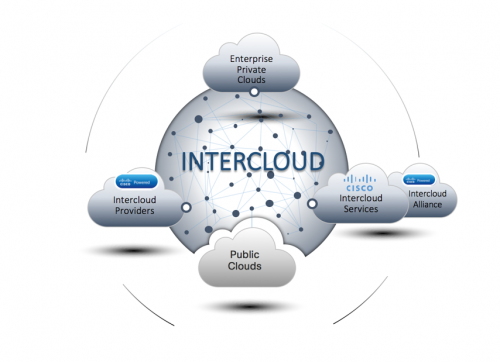
Head in the clouds…
It’s fair to say that the ‘cloud’ has become ubiquitous in many areas of information technology. In my working life, there doesn’t seem to be a day that goes by without the mention of them. Whether it be public, private, or hybrid, cloud certainly appears to be on the horizon. Almost all meetings I attend and presentations I see have all, in some way, referenced one, if not all, of these clouds, with most companies urgently developing their cloud strategy. Until recently, these types of clouds were only buzzwords to me, they had no real tangible meaning. Thinking there may be other people out there who are in my position, I decided to put my head in the clouds and outline the various cloud components and offerings.
First of all, I think it’s important to set the scene, and outline the reasons why a cloud is fast becoming, if it hasn’t already, a necessity in many organisations. As organisations fight to become digital in an effort to create innovative applications or services to solve business problems, they must find a way to deliver this based on lean and agile principles in which the development and operations teams collaborate to, amongst other things, more quickly seize market opportunities and accelerate time to market. Software development continues to dominate within many organisations and its timely delivery is becoming detrimental to a company’s success. Due to the ever increasing pressures to support and deliver these business objectives, IT is turning to cloud technologies in order to satisfy the needs.
From Gartner Inc naming cloud as one of the top 10 strategic technology trends for 2015, to the Forrester Research which says the public cloud market is estimated to reach $191 billion by 2020, to the Cisco Global Cloud Index (CGI) that says by 2019, 83% of global data center traffic will come from cloud service and application, its abundantly clear that the cloud will play a major role in IT in the coming years.
So just how is Cisco delivering on the cloud fronts?
Let’s start with the private cloud. Depending on the consumption model of the cloud service, in terms of ownership, management, and location, there are several options available to an Enterprise. The Cisco cloud portfolio encompasses options to build complete and, as I’ll mention later, hybrid-ready private cloud solutions. As could be expected, there is no “one size fits all” private cloud for every business, so Cisco offers a broad portfolio of private cloud solutions developed in conjunction with a number of leading cloud infrastructure and application partners including NetApp, VCE, EMC and Microsoft amongst others. The Cisco Private Cloud solutions are built on the Cisco UCS Integrated Infrastructure which includes the Cisco Unified Computing System (UCS), and the Cisco Nexus Family fabric products. In conjunction with the partner ecosystem, Cisco have incorporated the computing, networking, management, storage access, and security solutions into a unified and cohesive platform designed to automate IT as a Service (ITaaS).
So what if an IT organisation finds that deploying a private cloud solution does not yield the ROI they were expecting? After all, deploying a private cloud is more than technology and requires organisational and cultural changes by using a combination of new technology, processes, and tools. The Cisco ONE Enterprise Cloud Suite addresses these needs in an engineered solution that manages and automates the lifecycle of not only the infrastructure, but the clouds and applications too. With the Cisco ONE Enterprise Cloud Suite, a business can absorb automation at a pace that is comfortable with them.

Finally, as a private cloud offering, there is Metapod. Metapod, is a production-ready, OpenStack solution that Cisco engineer, deploy, and remotely operate on a company’s behalf 24×7 as a service. It delivers a true public cloud experience for end users, but on a company’s premises, behind their firewall, and with complete administrator control. An infrastructure-as-a-service (IaaS) offer, Metapod provides a choice of pre-engineered and managed OpenStack solutions based on Cisco’s enhanced OpenStack distribution. To users and developers, it provides a predictable, easy and fast environment, whilst also delivering the control, reliability and visibility that the operations team demands.
Earlier, I mentioned hybrid-ready private clouds. There may come a time when a company, to improve business flexibility and economics, is ready to extend their private cloud into the public cloud, or Intercloud ecosystem. For this reason, Cisco encourages customers to design their private cloud deployments to be hybrid ready from the beginning, so that this extension into the Intercloud ecosystem is a possibility if and when required. But just how is this possible? Along with the partner ecosystem, private, public, and hybrid clouds are transparently connected into an interconnected global cloud of clouds. Simply put, the Intercloud is the globally connected network of clouds.The technology which enables the Intercloud is Cisco Intercloud Fabric. Cisco Intercloud Fabric enables secure, open, flexible, and easy-to-manage solutions that facilitates the portability of workloads based on business needs. And all this is accomplished without compromising availability, security or performance requirements.
So that’s the private and hybrid clouds covered. What about the ‘public’ cloud? It’s clear that many Service Providers out there will have recognised that customers are attracted to the cloud, as it empowers IT to act as brokers of business-critical IT services. To take advantage of the market and address the demand, Service Providers need a cloud strategy of their own to build and offer cloud solutions. When Enterprises are ready to extend their private cloud, they want to be sure that the cloud services they use are enterprise-class.
![]() Cisco has developed the Cloud and Managed Service Program (CMSP) which provides huge advantages to both Service Providers and the consumers of the services. CMSP allows Service Providers to simplify and speed deployment with innovative, validated architectures, increases their agility to meet customer needs, clearly outlines the value of service offered, and increases their visibility through customer recognition of the Cisco Powered logo. When Service Providers join the CMSP, they have access to a portfolio of 22 enterprise-class Cisco Powered services to deliver to their customers.
Cisco has developed the Cloud and Managed Service Program (CMSP) which provides huge advantages to both Service Providers and the consumers of the services. CMSP allows Service Providers to simplify and speed deployment with innovative, validated architectures, increases their agility to meet customer needs, clearly outlines the value of service offered, and increases their visibility through customer recognition of the Cisco Powered logo. When Service Providers join the CMSP, they have access to a portfolio of 22 enterprise-class Cisco Powered services to deliver to their customers.
Consumers of cloud services know that best effort isn’t good enough when their business is on the line. They also want the same experience from the cloud as their own on-premise solutions. Customer can rely on Cisco Powered services as they are safe in the knowledge that third-part audits ensure every service delivers enterprise-class performance, that the service is built on Cisco validated architectures and open standards, and that Service Providers must meet strict qualifications, meaning they can connect to the cloud with confidence.
All of these applications and service are available through the Cisco Intercloud Marketplace, which is a global storefront that allows consumers to find, purchase, and consume the latest offerings.
Finally, there is Cisco Managed Services. In a nutshell, with Cisco Managed Services, Cisco can work with a company to created a managed service solution that monitors availability and performance for some or all of the network, as well as the collaboration, security and data center technologies, such as WebEx, Spark, OpenDNS etc…
Final thoughts…
Business agility nowadays more than ever depends on IT agility, or how quickly IT can deliver new business solutions to business problems. No business is alike, and consideration and qualification into the type of cloud that best suits an organisation is strongly recommended, especially given the broad range of service and products available!

